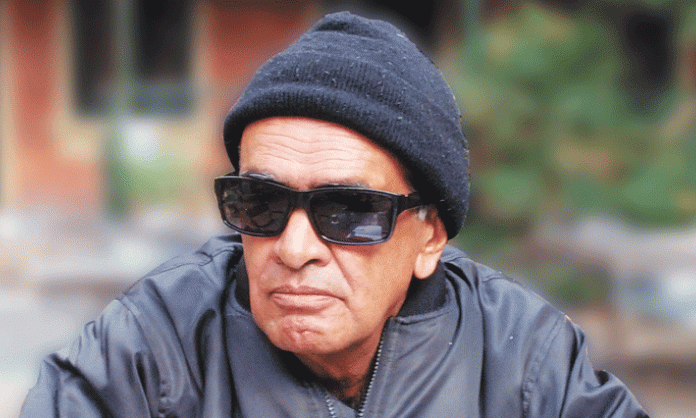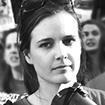Gary Foley was a rebel from a very young age. The first act of rebellion that he can remember was rearranging the curriculum at his high school. Gary and some of his mates had signed up for an agriculture class because they thought it sounded easy. He soon discovered it wasn’t all it was cracked up to be.
“The first day of agriculture they handed us these shovels and picks. They took us to the school plot and they said, ‘Dig this up’. It was bloody hard work and I thought to myself, ‘Agriculture’s not for me’.
“So halfway through the first day, I organised a deputation of some of my mates and we went off to see the headmaster. We said, ‘We don’t want to do agriculture, so is there any other option?’ The headmaster looked us up and down and said, ‘Well, if you can get twelve students interested, I can start a class of technical drawing.’ I said, ‘Right, that sounds not as hard as agriculture’. I organised the students and I took that tech class for the rest of the time I was at Tenterfield High School.
“So my first act of rebellion happened because I really didn’t like hard work. It was then, when I was just 13, that I realised you could make change if you went about it in a certain way, if you went out and ‘organised the masses’ so to speak.”
Radicalising in Redfern.
Gary grew up in rural NSW. There were no connections to city life – except at night time when the atmospheric conditions allowed them to pick up Sydney radio. This provided a few glimpses into the outside world. He witnessed the Freedom Rides when they swept through the town but, overall, Gary describes himself as “young and wet behind the ears when I arrived in Sydney at the age of sixteen”.
He moved to Redfern in 1967 at a time when the Aboriginal population was dramatically increasing. Between 1966 and 1969 it went from about 1,500 to 30,000. It became a political hotbed and the heart of the Aboriginal resistance.
Gary explains that one of the first things he learnt upon arriving in Redfern was to be extremely wary of the cops. The NSW police are notorious for their harassment and brutalisation of Aboriginal people. Gary was bashed up by the cops one night at the old Regent Street police station.
“I had a pretty good first lesson in what was happening to lots of other Aboriginal people my age in and around Redfern at the time. You know – the constant police bashing, police intimidation, police picking up people and throwing them in jail on trumped-up charges, all this sort of stuff.
“That kicking that the New South Wales coppers gave me really got under my skin; it really upset me – not because they gave me a kicking, but because I hadn’t done what they were kicking me for. Had I had done what they were giving me the kicking for, then maybe I would never have become so indignant and political. But I hadn’t, and I was very angry about it.
“One week later, a bloke who I’d just met called Paul Coe came up to me and said, ‘We’re thinking of setting up a little group of us to talk about what we might be able to do about these coppers harassing us’. Because of what had happened to me a week before, Coe didn’t need to ask me twice. I said, ‘Sure, I’m with you, I’m with you’. He then handed me the autobiography of Malcolm X. He said, ‘Read this before you come next week’.
“It was these two events – getting bashed by the NSW coppers and reading the biography of Malcolm X – that transformed my thinking.”
The discussion group that Paul, Gary and others set up gave birth to the first Aboriginal legal service and to the Sydney chapter of the Black Power movement. This core of people became the major force behind the Aboriginal Tent Embassy and most of the key Aboriginal protests of the late ‘60s and early ‘70s.
The 1960s
The politicisation of the Aboriginal community in Redfern was not happening in isolation. The late 1960s was a time of immense social ferment both in Australia and internationally. There was the civil rights movement in America, the anti-Vietnam war movement, the anti-apartheid movement, the burgeoning gay rights movement and, particularly in Australia, a rising militancy in the trade union movement.
Gary became involved in many of the other struggles. “Thirty years later I read my ASIO file and I just get thinking, ‘Jesus, we were doing so much’. We were moving around. We were linking up.
“It was a really exciting time because, in addition to the winds of change running through colonised countries and de-colonisation beginning to happen, it also coincided with what some people call ‘the world youth rebellion’ or ‘revolution’. It was an era of protest.
“There had been huge demonstrations against the Vietnam War, big anti-American demonstrations. It was a really exciting time to be 18 years old. And ‘68 was a good year, for us in Redfern anyway, in terms of the connections we made and the networks we built.”
Links with the trade union movement
The Black Power movement in Redfern developed a strong relationship with the radical NSW Builders Labourers Federation (BLF), the forerunner of today’s CFMEU.
The BLF, under the leadership of Communist Party members, had begun to use its industrial muscle to wage political battles in support of Aboriginal rights, gay rights, women’s rights, and to save buildings and parkland from being destroyed by greedy developers.
“We were particularly impressed with Bob Pringle and Jack Mundey and Joe Owens, the leaders of the BLF in Sydney. When we were trying to set up the Aboriginal Embassy in ‘72 we were trying to figure out a way to get resources out of some of the trade unions, so we had a meeting with Mundey and Pringle.
“They said that we should go address a meeting of the Trades and Labor Council. But in order to do that, we needed to be members. So they made me and Billy Craigie honorary members, which enabled us to get out in front of the Trades Hall and make an appeal for support and funds. I’m a member of the BLF to this day.”
As well as the BLF supporting the Black Power movement, Gary and many of the activists around him were also involved with other BLF campaigns for the rights if the oppressed. Gary describes a campaign to save an old men’s nursing home in Glebe from council closure.
“Many of these old working class blokes would have been homeless if it hadn’t have been for the old men’s home. And so the BLF organised a whole community to form a barricade around the home. We had lookouts on the roof with binoculars to keep an eye out for the council cars coming. There were old blokes sitting on the roof of the joint, in their wheelchairs, making flour bombs, lining them up to throw at the council men and the cops when they came near. It was a brilliant, brilliant campaign.”
As well as key Communist Party members supporting the Aboriginal rights movement, some of the key Aboriginal activists were members of the party. Gary speaks with particular fondness of Ray Peckham.
“He was the first Aboriginal activist to ever get an ASIO file, in 1951. And he’s got one of the biggest files of any Aboriginal activist to this day. That’s in part because he’s one of a small group of Aboriginal people over the years – going back sixty years or so – that joined the Communist Party and stayed there.
“He was a fucking legend when I was about seventeen because Ray did most of his work not so much in the Aboriginal community in Sydney but in the trade union movement. He was big in the trade unions. He’s still a mad Marxist to this day. He never sold out.”
While we sit, a journalist rings Gary to ask his opinion on Nelson Mandela. Mandela was close to dying at the time. The journalist had interviewed Gary years ago, as a representative of the Aboriginal resistance, and was checking to see if his views on Mandela had changed.
Gary asks the journalist “What did I say back then?” He chuckles as the journalist responds on the other end of the line. His answer is short and sharp: “Yep I still feel exactly the same way. Mandela was a sell out.”
This irreverence towards an extremely important figure in the anti-apartheid movement, who tragically was co-opted by the ruling class and appeared to sell out many of his principles, is one of the many reasons why Foley remains an icon of the left. He has no time for Uncle Toms, refuses to identify with the likes of Noel Pearson or anyone else who sides with the oppressor, regardless of the colour of their skin.
Ongoing political activism
Gary remained active well after the radical period of the early 1970s. He still appears regularly at demonstrations, politicises the classes he teaches and he regularly speaks to large audiences of young people about racism and the need for radical resistance.
When I ask him about the high point of his political career he says there are too many to go through. The one he chooses to detail on this occasion is the 1990s campaign to save Northland Secondary College in the northern suburbs of Melbourne.
“That was a particularly interesting fight because that was the only time when I’ve led a grassroots community campaign where the majority of people marching behind me were not Aboriginal.
“It was the Aboriginal students who led the fight – but this was not an Aboriginal school; Aboriginal kids were less than ten percent of the school population.
“It was a particularly pleasing campaign because you couldn’t think of a more powerless group of people than the Northland community at the time: just poor white working class, migrants, battlers and rabble.
“The night Premier Kennett announced the closure there was a spontaneous community meeting. I think I was the only person in the room who’d had any sort of street organising and rabblerousing experience. It was fairly easy for me to make a rabblerousing speech which fired up the crowd. And before I knew what was going on, they carried me out on their shoulders and they told me I was their leader.
“We fought for three years. The state government spent $5 million trying to beat us. It cost us nothing because we had nothing, except our wits. We won.
“Jeff Kennett closed down 300 schools in Victoria and only one of those schools is still alive today. That’s Northland Secondary College.”
Gary is an inspiration for all of us fighting injustice today. Not only has he fought hard against the ongoing discrimination and genocide towards Aboriginal people; he has also stood unequivocally alongside the oppressed in all of their fights. He is a radical and an agitator and an example for anyone who wants to stand up against the system.
I conclude our interview by asking Gary what advice he would give young activists today. He responds by returning to a point he had made numerous times throughout our interview:
“If you want to change the world, it’s important to get together with others and be organised, because you can’t do it by yourself. That’s the only advice I could give.”









